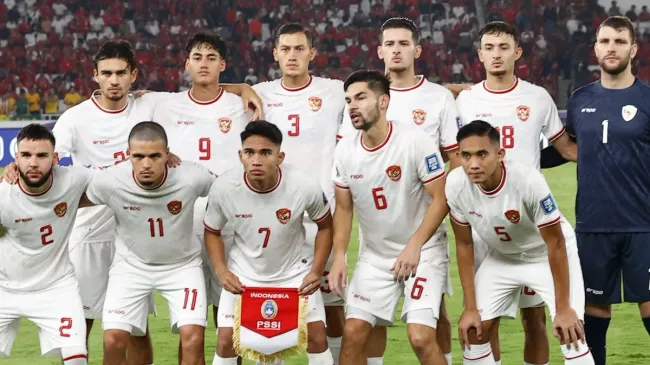- Home
- Advertise With us
- World News
- Tech
- Entertainment
- Travels & Tours
- Contact US
- About us
- Privacy Policy
Top Insights
Size vs. success: 10 most populous countries yet to reach FIFA World Cup

In world soccer, size doesn’t always translate to success. Some nations boast millions, even billions, of people, yet have never seen their flag fly at the FIFA World Cup.
In world soccer, size doesn’t always translate to success. Some nations boast millions, even billions, of people, yet have never seen their flag fly at the FIFA World Cup. It’s a paradox that continues to fascinate fans and frustrate players: how can countries with such vast populations, resources, and sporting passion continually fall short of qualification?
Despite having access to enormous talent pools, some of the most populated countries in the world have never participated in the World Cup. From Asia to Africa, the story is one of potential unfulfilled — a reminder that in soccer, infrastructure and strategy often outweigh numbers.
With 211 FIFA member nations, qualifying for the most prized international competition is the ultimate sporting test. Every four years, soccer’s elite battle for a limited number of spots — and while smaller nations such as Cape Verde and Uzbekistan have broken through for the first time ahead of the 2026 edition, several global giants remain on the sidelines.
The reasons are complex. In some cases, other sports dominate the culture; in others, administrative mismanagement or lack of investment has crippled progress. Political instability and inconsistent coaching have also derailed long-term projects.

The largest nations yet to qualify for FIFA World Cup
Below is the full list showing how these countries, despite enormous populations, remain absent from soccer’s biggest stage.
| Rank | Country | Population (2025 est.) | Qualification Record / Notes |
| 1. | India | 1.46 billion | Reached the 1950 finals but withdrew; has never qualified since. Cricket remains dominant. |
| 2. | Pakistan | 255 million | Never ranked higher than 141st; soccer trails behind cricket. |
| 3. | Bangladesh | 175 million | Did not attempt qualification until 1974; passionate fans, but limited infrastructure. |
| 4. | Indonesia | 278 million | The Dutch East Indies featured in 1938; modern Indonesia has never qualified. |
| 5. | Ethiopia | 135 million | Reached 2014 African play-offs; one of Africa’s soccer pioneers. |
| 6.. | Philippines | 117 million | Ranked 143rd in 2025; soccer’s growth slowed by basketball’s popularity. |
| 7. | Vietnam | 101 million | Advanced to Asia’s third qualifying round in 2022; still short of World Cup level. |
| 8. | Thailand | 71.6 million | Twice reached Asia’s final qualifying round; ranked 101st globally. |
| 9. | Tanzania | 70.5 million | Early exits in CAF qualification; emerging soccer nation. |
| 10. | Kenya | 57.5 million | Long-standing potential hindered by FIFA suspensions and governance issues. |
Tale of missed chances
Among the group, India’s story stands out the most. Once set to debut at the 1950 World Cup in Brazil, the nation withdrew before the tournament began. On the other hand, Indonesia, the fourth-most populous country on Earth, came closest to making history in 1938, though technically as the Dutch East Indies, a colonial state. They lost 6-0 to Hungary in their only appearance under that name and have not returned since.

For Pakistan, soccer has always been overshadowed by cricket, while Bangladesh, despite a deep love for Argentina and Brazil, has never built a sustainable soccer structure. Meanwhile, Ethiopia’s absence is one of African soccer’s great mysteries. A founding member of the African Cup of Nations and a former champion, the country has not managed to convert its regional success into World Cup qualification.
Why do they still struggle?
Experts point to three recurring factors:
- Investment gaps — many federations lack consistent funding for grassroots and infrastructure.
- Administrative instability — leadership changes disrupt long-term planning.
- Cultural priorities — in nations like India and Pakistan, cricket eclipses all other sports.
Despite FIFA’s expansion to 48 teams for 2026, which theoretically opens more pathways, qualifying remains brutally competitive, especially in Asia and Africa, where hundreds of teams chase a handful of spots.
Related Articles
Bitcoin Price Wobbles — Is A Sharp Downside Move On The Horizon?
Bitcoin price is struggling to settle above $113,500 and $114,000. BTC is...
These Bose earbuds are an easy pick over AirPods for me – why I don’t regret it
The Bose QuietComfort Ultra 2 deliver an unmatched comfort and audio experience,...
Scam texts net over $1 billion for cyber gangs – how to avoid their traps
Aided by US-based mules, these Chinese cybercrooks pester you with annoying scam...
Elon Musk Ends His Bitcoin Silence With A Surprising Comment
Elon Musk’s one-word reply on X has put Bitcoin back in the...








Leave a comment